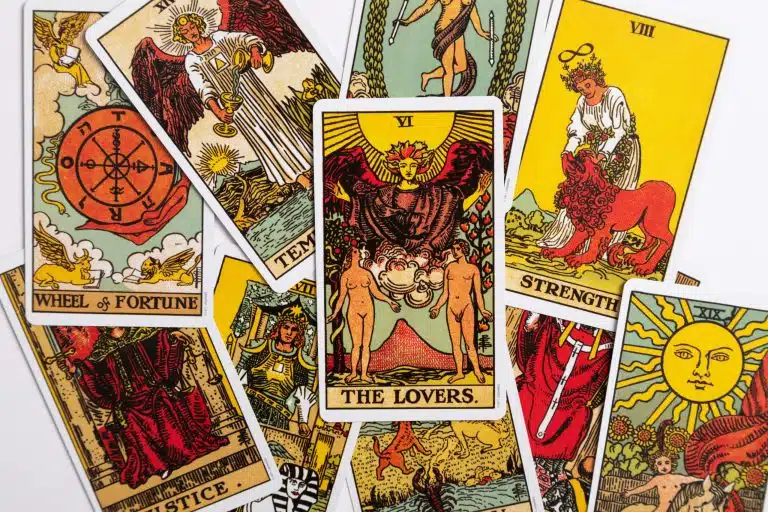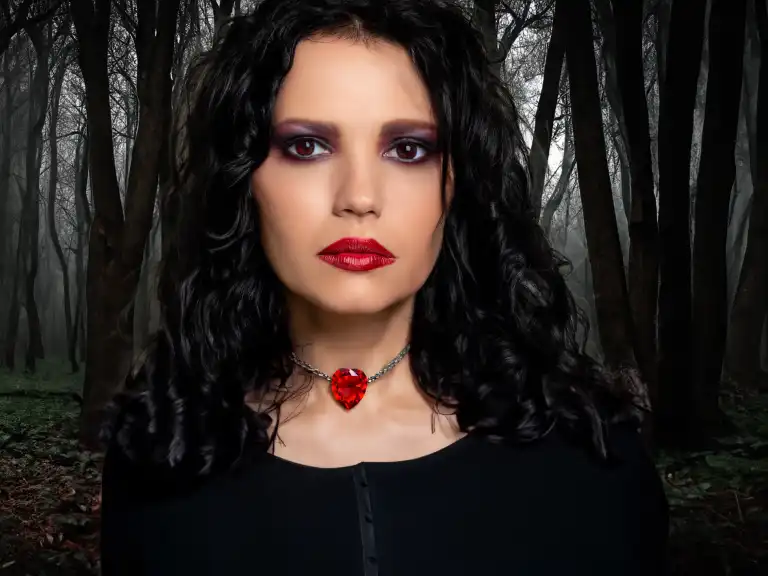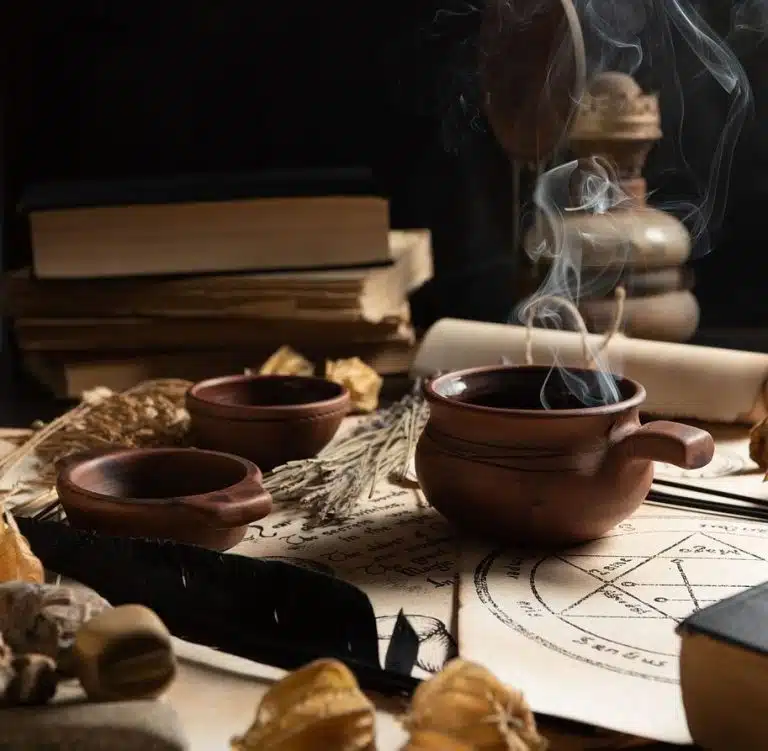Table of Contents
Are you interested in learning about the art of tarot? Tarot cards have been used for centuries as a tool for divination, self-discovery, and spiritual guidance. Whether you’re a seasoned tarot reader or a complete newbie, this beginner’s guide to tarot will take you on a journey through the fascinating history of tarot cards and teach you the basics of how to use them. By the end of this guide, you’ll have a deeper understanding of the mystical world of tarot and be ready to start exploring it for yourself!
Short History of Tarot
The history of tarot or “tarocchi” is shrouded in mystery and speculation. Some believe that the tarot originated in ancient Egypt or even Atlantis. Others trace the tarot’s history to medieval Italy, where it was probably first used as a game. Regardless of its exact origins, the tarot has become a popular tool for divination and self-discovery over the centuries.
The earliest known tarot decks date back to the 15th century. Some theories suggest that these decks were used primarily for playing card games, with no connection to divination or magic. However, some think otherwise. Nevertheless, we can agree that in the 18th century, the tarot was primarily used for divinatory purposes. During this time, occultists became interested in the symbolism of the cards.
One of the most influential figures in the history of tarot is French occultist and writer Eliphas Levi. In the mid-19th century, Levi published a book called Transcendental Magic, in which he introduced the concept of the tarot as a tool for spiritual development. Levi’s work helped to popularise the tarot among occultists in France and beyond.
Arthur Edward Waite and artist Pamela Colman Smith made another significant contribution to the history of tarot. In 1909, they published the Waite-Smith deck, which quickly became one of the most popular and influential tarot decks of the 20th century. The deck featured detailed illustrations incorporating esoteric symbolism, increasing the deck’s suitability for divination and spiritual exploration. Waite also wrote a companion book to the deck, which explained the symbolism and provided guidance on interpretation. Their deck forms the basis of many modern decks even today.
Today, countless tarot decks are available, each with unique symbolism and interpretation. Some decks follow the traditional Waite-Smith system, while others incorporate different themes and artistic styles. Each deck has its own personality and can provide different insights and perspectives to the reader. The tarot can be a powerful tool for personal growth and reflection, helping individuals understand their lives and the world around them. Since you are reading a beginner’s guide to tarot, you might be or soon will be one of them.
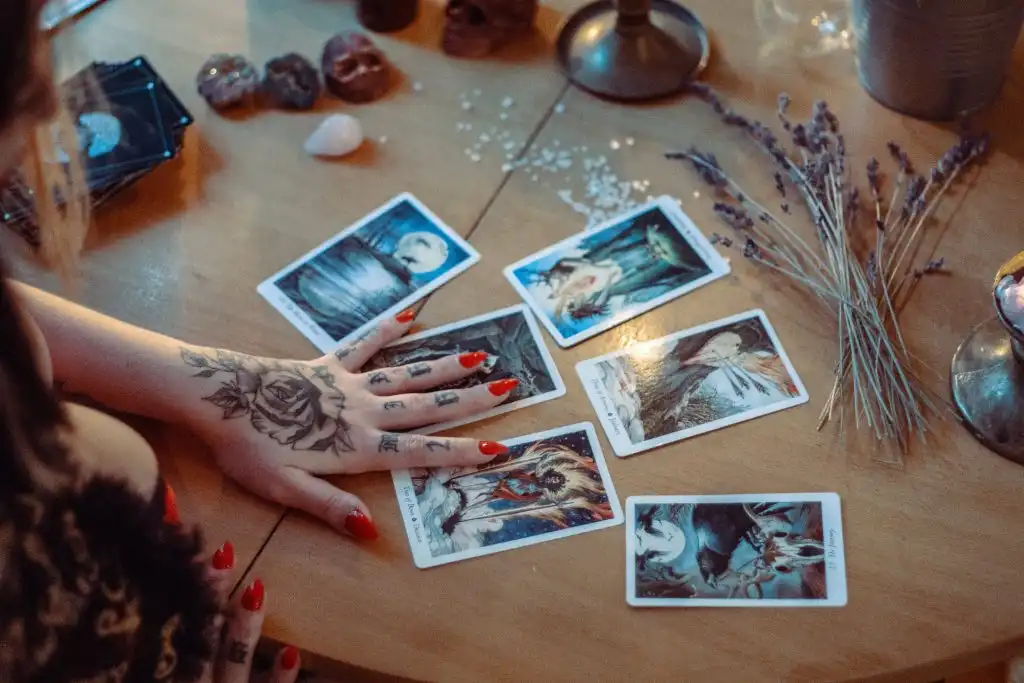
What Happens During a Reading?
A typical tarot reading begins with the reader asking the client if they have any specific questions or concerns they would like to address during the reading. Then, the reader will shuffle the cards while the client focuses their energy on their question or concern. Once the cards are shuffled, the reader will lay them out in a specific pattern known as a spread. The three-card spread is the most common, representing the past, present, and future, among other things.
With the cards laid out in front of them, the tarot reader will begin to interpret the cards. This involves looking at the cards’ symbolism, imagery, and placement in the spread. Each card represents a different aspect of the client’s question or concern, and the reader will use their knowledge of the Tarot to provide insight and advice. The reader may also use intuition to better understand the cards and their meaning.
After the cards have been interpreted, the tarot reader will provide their insights and advice to the client. This can include suggestions for action, areas to focus on, or potential outcomes. The reader will encourage the client to use the insights gained from the reading to make positive changes in their life. The reading concludes with a sense of closure.
It’s important to note that it is also possible to do a reading for yourself. However, it’s essential to approach self-readings with care and objectivity. It’s easy to let our biases and desires cloud our interpretation of the cards, leading to inaccurate readings. Additionally, you should be aware of fraudulent tarot readers who may take advantage of vulnerable clients. Researching and choosing a reputable reader is essential to ensure a positive and accurate reading experience.

The Symbolism of the Waite-Smith Tarot
A normal tarot deck consists of 78 cards, which might seem overwhelming at first. However, it becomes more understandable once you grasp the concept behind them. If you’re keen on learning how to interpret tarot cards, there are a few essential things to consider. Firstly, it’s important to know that tarot cards are divided into two main categories: major arcana and minor arcana.
The major arcana cards represent significant life events and themes, while the minor arcana cards represent everyday situations and challenges. Each card has its own symbolism and meaning and can be interpreted in different ways depending on the context of the reading. For example, the High Priestess card can represent intuition, secrets, and hidden knowledge.
Major Arcana
There are 22 cards in the major arcana. These cards are considered the most powerful and significant in the deck and often carry a lot of weight in a reading. Some of the most well-known cards in the major arcana include The Fool, The Lovers, The Hanged Man, Death, and The Devil. These cards can provide insight into important life issues like relationships, careers, spirituality, and personal growth.
The major arcana cards also present a journey, starting with The Fool, which represents a new beginning, and ending with The World, which symbolises completion and fulfilment. Each card in between tells a story of growth, challenges, and transformation. The journey through the major arcana can be seen as a metaphor for life, as we encounter different experiences and lessons along the way. By reflecting on the messages of these cards, we can gain a deeper understanding of ourselves and our path in life.
| Name of the Card | Description |
|---|---|
| The Fool | The beginning of a journey, innocence, spontaneity |
| The Magician | Manifestation, power, resourcefulness |
| The High Priestess | Intuition, mystery, subconscious knowledge |
| The Empress | Motherhood, fertility, abundance |
| The Emperor | Authority, leadership, structure |
| The Hierophant | Tradition, spirituality, guidance |
| The Lovers | Union, choices, relationships |
| The Chariot | Determination, control, and overcoming obstacles |
| Strength | Inner strength, courage, compassion |
| The Hermit | Solitude, introspection, spiritual quest |
| Wheel of Fortune | Destiny, change, cycles |
| Justice | Fairness, balance, legal matters |
| The Hanged Man | Surrender, letting go, sacrifice |
| Death | Transformation, endings, new beginnings |
| Temperance | Harmony, balance, moderation |
| The Devil | Temptation, bondage, materialism |
| The Tower | Sudden upheaval, revelation, change |
| The Star | Hope, inspiration, spiritual insight |
| The Moon | Intuition, illusion, the subconscious |
| The Sun | Success, vitality, joy |
| Judgement | Evaluation, rebirth, spiritual awakening |
| The World | Completion, fulfilment, wholeness |
Minor Arcana
The minor arcana cards are divided into four suits: Wands, Cups, Swords, and Pentacles. Each suit represents a different element and corresponds to a separate area of life. The Wands represent fire and creativity, the Cups represent water and emotions, the Swords represent air and intellect, and the Pentacles represent earth and material possessions. In a standard deck of cards, each suit has numbered cards from Ace to Ten and four court cards (Page, Knight, Queen, and King).
The numbered cards represent different stages of the theme associated with that particular suit, building upon each other to illustrate a progression or journey within the realm of life or experience expressed by the suit. On the other hand, the court cards signify different personalities, roles, or stages of development within the theme of the suit.
When interpreting a tarot card, it’s essential to consider both the suit and the number. For instance, the Four of Cups represents emotional withdrawal and dissatisfaction. The Cups symbolise emotions, while the number four indicates stability and structure. Therefore, these meanings imply that the querent might feel stuck and need to break free to find greater fulfilment.
You don’t need to remember all the meanings because the Waite-Smith decks incorporate numerology into the symbolism. Each numbered card in the Minor Arcana corresponds to a number from 1 to 10, which has significance and meaning. For example, 1 represents new beginnings and potential, while 10 represents completion and fulfilment.
It’s worth noting that tarot cards can also be drawn in reverse, which changes their meaning. Some people like to use a coin to determine whether a card is upright or reversed. When a card is drawn in reverse, its meaning is often the opposite of its upright meaning. For example, the reversed Four of Cups might suggest the querent is ready to move on and find greater fulfilment.
| Name of the Card | Numerological Meaning |
|---|---|
| Ace | The pure essence of the suit, potential, opportunity |
| Two | Duality, balance, choices |
| Three | Expansion, creativity, communication |
| Four | Stability, foundation, structure |
| Five | Change, challenge, conflict |
| Six | Harmony, cooperation, balance |
| Seven | Spiritual growth, introspection, assessment |
| Eight | Power, success, achievement |
| Nine | Near completion, close to fulfilment, attainment |
| Ten | Completion, end of a cycle, fulfilment |
| Page | New beginnings, curiosity, learning |
| Knight | Action, movement, progression |
| Queen | Nurturing, compassion, maturity |
| King | Leadership, authority, mastery |
Beginner’s Guide to Tarot Spreads
This wouldn’t be a beginner’s guide to tarot if it didn’t include something about tarot spreads. A spread is a specific arrangement of tarot cards that can reveal different aspects of a person’s life. There are many types of tarot spreads, each with its unique purpose and meaning. Some common tarot spreads include the Celtic Cross, the Three-Card Spread, and the Five-Card Spread. It is important to notice that while the themes of the spreads are quite static, the meanings of the positions can differ from person to person.
The Celtic Cross is one of the most popular tarot spreads. It consists of ten cards and is used to provide insight into a specific situation or question. Usually, the first card represents the current situation, while the second card represents any obstacles that may be present. The third card could represent the past, the fourth the future, and the fifth the influences around the question or situation. The remaining cards could provide further insight into the question or situation.
The Three-Card Spread is a simple yet effective tarot spread that can provide quick and concise answers to a question. The three cards can represent many things. One way is that the first card represents the past, the second represents the present, and the third represents the future. This spread can be used for various questions and situations, from personal relationships to career decisions.
The Five-Card Spread is another popular tarot spread that can provide insight into a specific situation or question. As with the three-card spread, this spread also has limitless variations. One way is that the first card represents the current situation, the second card represents any obstacles that may be present, and the third card represents the needed advice or guidance. The fourth card represents the outcome, while the fifth card represents any additional advice or insight that may be needed.
Other Types of Decks
The Waite-Smith deck is not the only type of deck out there. Since this post is a beginner’s guide to tarot, we will not go into the details. However, here is a short summary of two of the most famous alternatives.
The Thoth Tarot is one of the most popular Tarot decks among experienced Tarot readers. This deck was created by Aleister Crowley, a famous occultist heavily influenced by Egyptian mythology and symbolism. The Thoth Tarot features artwork rich in esoteric symbolism, making it a favourite among those who delve into the deeper mysteries of the Tarot. The deck is known for its intricate imagery, which can take some time to fully understand.
The Marseille Tarot is another popular Tarot deck that has been in use since the 16th century. This deck is known for its simplicity and straightforwardness, with each card featuring a simple image and a number corresponding to its meaning. The Marseille Tarot is an excellent choice if you want a deck without the story elements of the Waite-Smith deck. Despite its simplicity, the Marseille Tarot is still a powerful tool for divination, and many experienced Tarot readers use it.
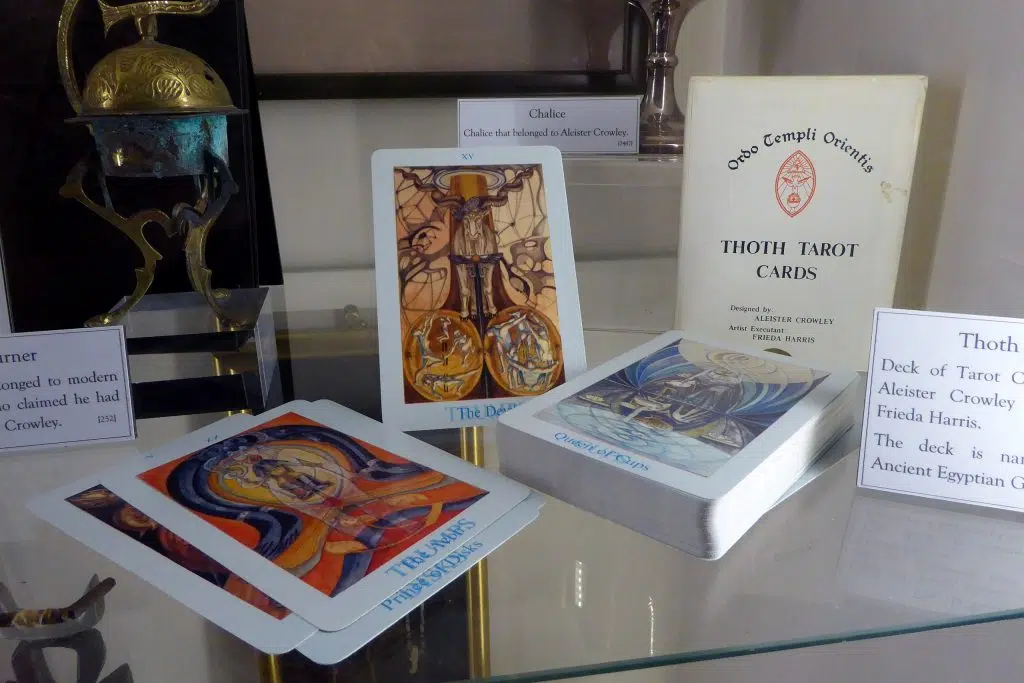
Conclusion
Tarot cards have a rich and fascinating history and continue to be a popular tool for divination and self-discovery. Whether you’re a seasoned tarot reader or a complete newbie, there’s always something new to learn about the world of tarot. By exploring the symbolism and interpretation of the cards, you can gain valuable insights into your life and the world around you. Just remember to approach tarot readings with an open mind and a healthy dose of scepticism, and you’ll be on your way to uncovering the secrets of the tarot. Thank you for reading this beginner’s guide to tarot!

